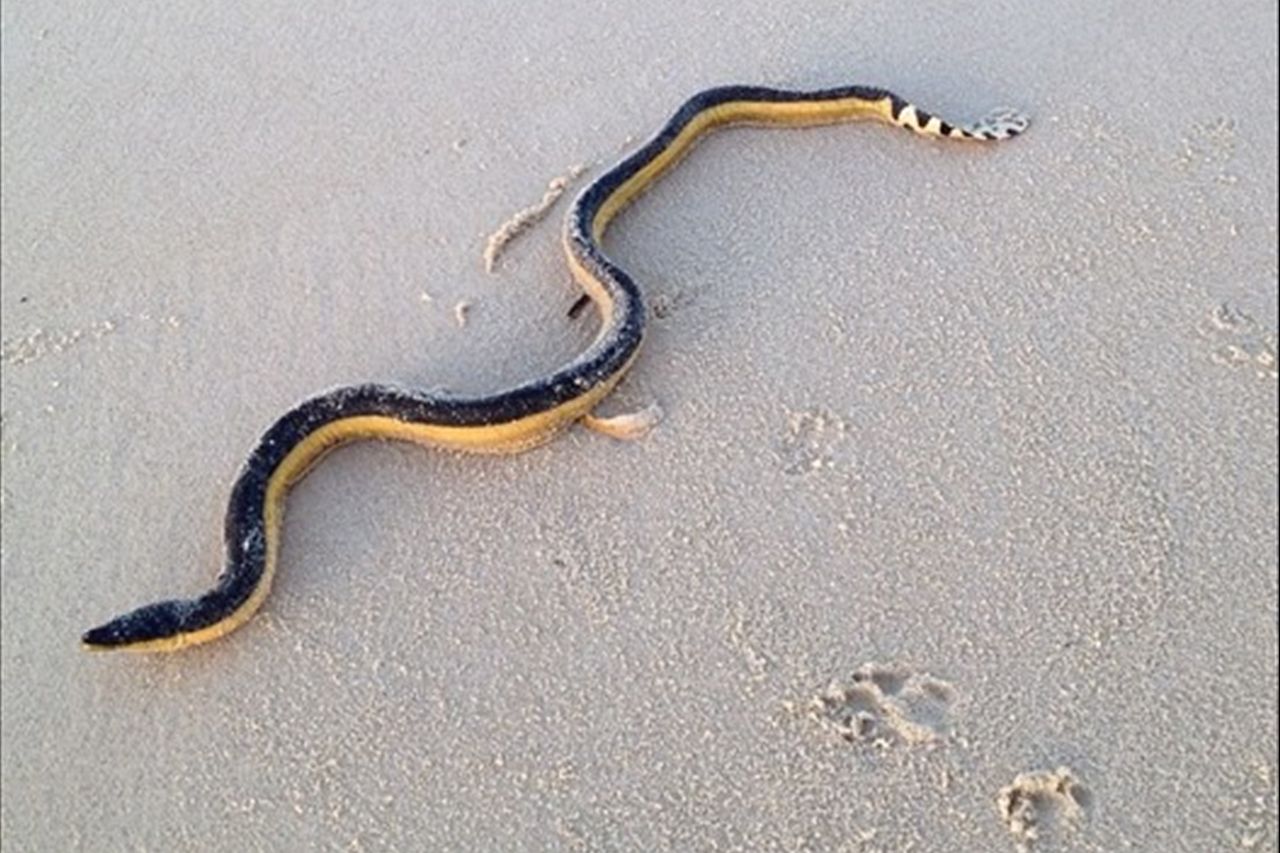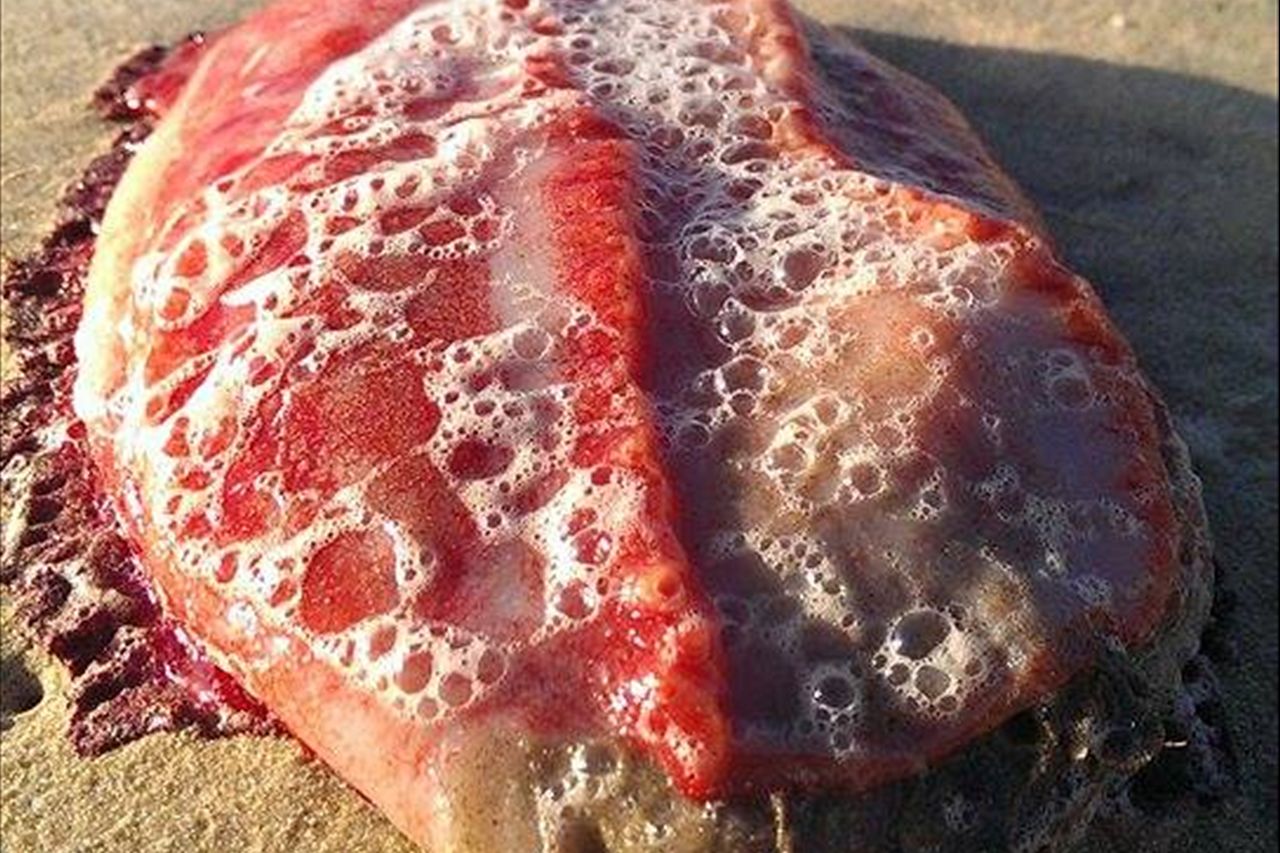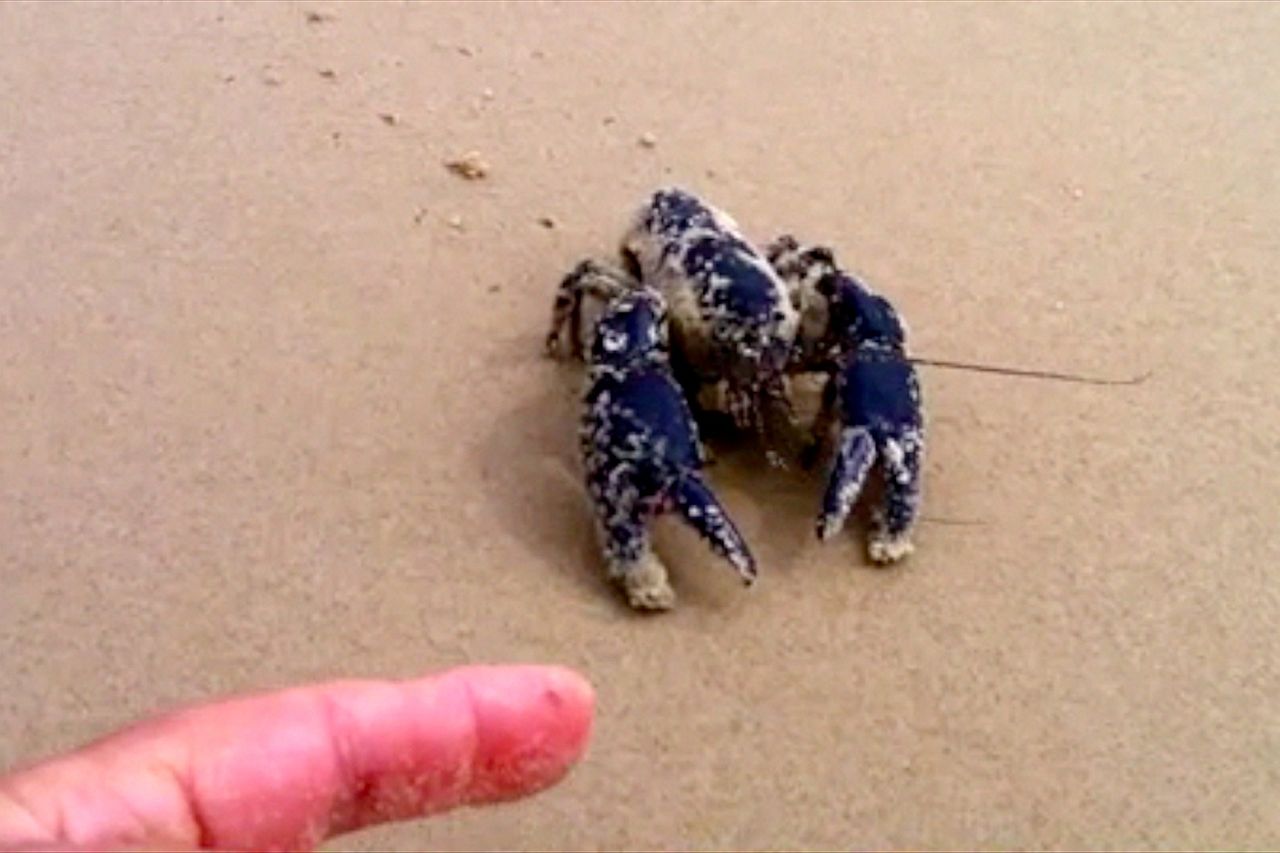
Sunshine Coast locals have noticed a plethora of strange creatures washed up on beaches and lost from home.
Red stinky blob
Debbie Higgs of Mt Coolum found a "weird red blob-like creature" on Mudjimba Beach.
"It's 25cms long roughly. It's oval-shaped, frilly and it's got a peculiar pattern down its back. [It was] cold, squishy and had that really gluggy type feeling like a jellyfish. It had vibrant dark red around it in a frill," she said.
"When I found it, it was still pulsing. I didn't want to touch it in case it was poisonous. I've never seen anything like it.
Debbie says she put a photo on twitter and linked it to Instagram and "suddenly all these people started contacting me."
Since, the story has been published worldwide.
"We contacted a museum and we've been told it's a Spanish dancer usually found in Indian waters or off Bali," Debbie said.
Blue nippers
Graham Coghill from Marcus Beach found a confused crayfish-like creature walking towards the surf.
"Just where Peregian beach comes out of the bush we saw this crayfish crawling down towards the surf," he said.
"It didn't look like a salt water crayfish. I watched it for a while and after a while I picked it up and put it back into the freshwater creek.
"It was very deep blue, almost black. The shape, size and colour made me think it was a freshwater crayfish."
Flat stripy sea snake
Marine biologist Dr Julian Pepperell says a sea snake that also washed up on the beach at Twin Waters was a yellow-bellied sea snake, which is the most widely distributed snake in the world.
"It spends its whole life in the sea feeding on fish on at the surface," he said.
"They are often found stranded on beaches and are unable to survive because their blood pressure rises."
Dr Pepperell says these snakes are very poisonous but have short fangs and no related deaths have been recorded in Australia.
"Treat them very carefully and don't pick them up," he advised.
The diagnosis is...
Dr Pepperell says the crayfish found at Peregian is almost certainly a sand yabbie and is closely related to yabbies found west of the Great Dividing Range.
"This particular yabbie is native to this part of south-east Queensland,' he said.
"It mostly occurs on the sand islands, Moreton, Stradbroke and Fraser Islands. They burrow into sand around coastal creeks and do live in freshwater and there are some concerns about it being endangered.
Dr Pepperell says yabbies are well known to be able to walk through the bush.
He says the red blob was a little harder to identify and was probably a type of sea slug or nudibranch, which mean naked-gill.
"There's a lot of different species of sea slug ranging from very small to very large," Dr Pepperell said.
"There are often brightly coloured, probably to signal to predators they aren't good to eat.
"They call this one a Spanish dancer because, when you see them underwater, they swim in this beautiful undulating way, almost dancing-like with their tentacles flaying out in the water."





Comment: See also: Australian students discover rare fish dead on beach